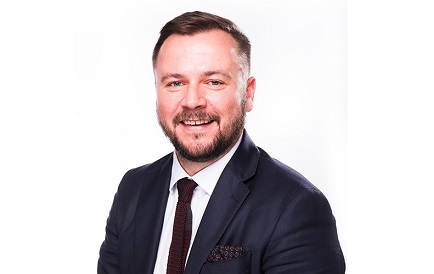As media buying evolves, verification and brand safety remain the key to differentiation within a competitive market. Craig Tuck, Managing Director of RhythmOne, looks at how ad tech firms can help brands while avoiding the Facebook and Google duopoly.
As we head further into 2018, there are a couple of areas of digital marketing firmly on my agenda. This year alone display ad spending in the UK is expected to reach 22.63 billion and as such, I see this as a sign for clear competition lines to be drawn. Verification and brand safety remain the key to differentiation within a competitive market. While differentiation sets aside the competition, consolidation is also a huge trend on the agenda.
We’re now seeing an integration and streamlining of the value chain. Point solutions are finding it difficult to thrive alone and are increasingly being subsumed by larger, full-stack offerings. The market is seeing a serious process of consolidation into a handful of end-to-end marketplaces that have massive network capabilities and liquidity. In order to remain competitive in the market, ad tech companies must offer the full package of services required, to ensure differentiation and avoid being swallowed up by the Facebook /Google duopoly.
So how do brands ensure differentiation within the market?
Differentiation: brand safety, contextual relevance and viewability
Previously, media buying consisted of selling a number of impressions at a specific CPM (cost per mille). Today, brands are measuring success around viewability, or verification (the elimination of non-human traffic), engagement, brand safety, and an evolving suite of quality and performance-driven KPIs.
When it comes to brand safety, there’s a lot to be said about controlling where an ad shows up contextually. After the YouTube scandal last year and controversy with YouTube vloggers this year, ad players across the board are tightening up requirements for publishers to quell advertiser concerns. An advertisement can have severe reputational damage if it ends up in the wrong place. The ability to effectively filter content that brands would consider objectionable, leveraging a true learning algorithm that is constantly evolving is key.
Similarly, being able to spot non-human traffic (NHT) is mission critical. NHT has two main categories. One is general invalid traffic (GIVT), and the other is sophisticated invalid traffic (SIVT). GIVT is traffic that is generated through bots, spiders, invalid names, and invalid IPs, for example. As the name implies, SIVT a little more complicated and is generated by bots or crawlers that are pretending to be legitimate, or ads that are delivered by hijacked or malware-infected devices.
Having proprietary brand-safety filtering technology that can eliminate suspicious and underperforming traffic before, during, and after it reaches the marketplace reduces part of the problem. But continuous monitoring of supply relationships and suspending or even terminating partnerships if quality issues persist without remediation are necessary actions to be taken when it comes to brand safety. Filtering requests in this manner allows a far more concentrated set of impressions to be passed along that are of much higher quality. Leveraging this technology, is a major differentiator in today’s market.
By using algorithms it is now also possible to understand the correlation between in-view ads and viewable ads over time, at a domain or user level, you can then extrapolate and predict a viewability threshold with a high degree of confidence. With the power to predict viewability pre-bid, this critical KPI has now become the basis for a new way to package inventory. It’s now possible to actually package this inventory into PMPs (private market places) and guarantee achievement of designated viewability or invalid traffic (IVT) thresholds.
Looking outside the Facebook/Google duopoly
It’s inevitable that spend is going to consolidate and smaller companies, as we saw in 2017, are likely to be bought up by larger ad tech companies if the value offering is there. This trend is likely to continue but this will not negate the success of others. There is definitive opportunity and motivation for advertisers to complement their spend on these platforms with partners that fall outside the walled gardens of Google and Facebook. Not only to access inventory that is perhaps not as well represented in these platforms – like connected TV – but also because independent platforms are open to providing greater transparency. A duopoly doesn’t make for an efficient marketplace in the eyes of advertisers. Competition helps to drive innovation and offer choice. That said, any platform that is going to succeed in this environment not only needs to be full-stack, but also add value in terms of quality filtering, performance guarantees, and unique data targeting.
It’s clear the future of advertising is changing. Ad tech companies must adapt and change their value proposition to suit the needs of the current market. If they refuse to adapt to new ways of thinking and innovation they are unlikely to survive 2018 and beyond.
By Craig Tuck
Managing Director
RhythmOne
